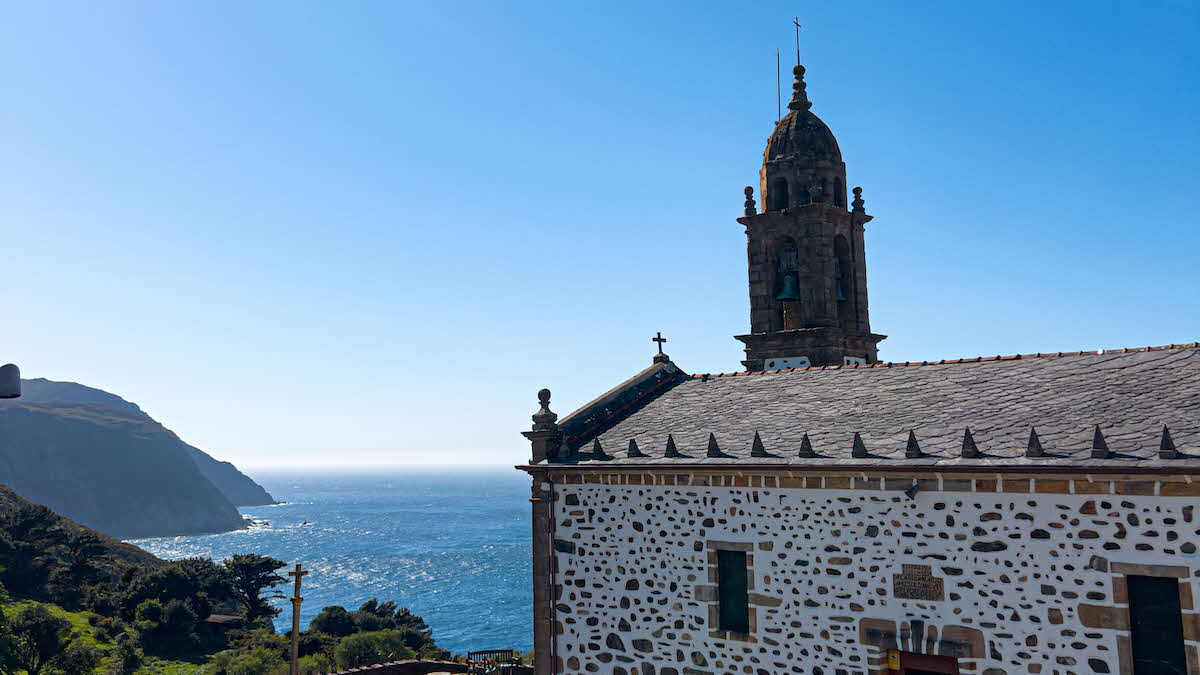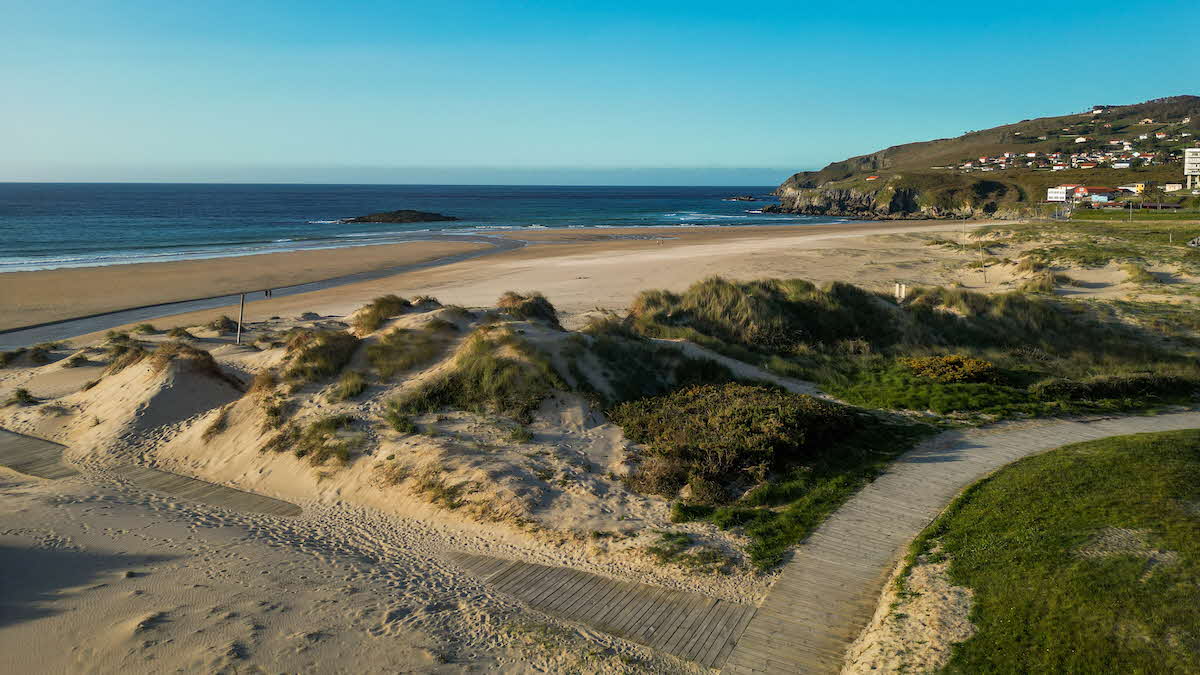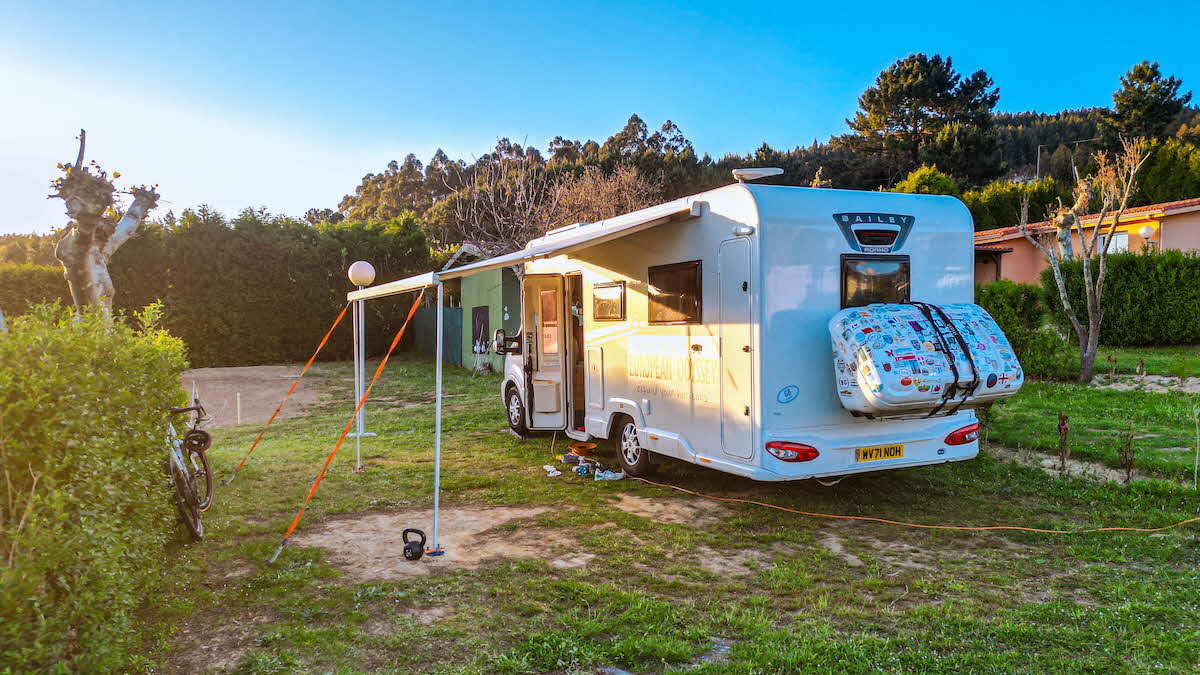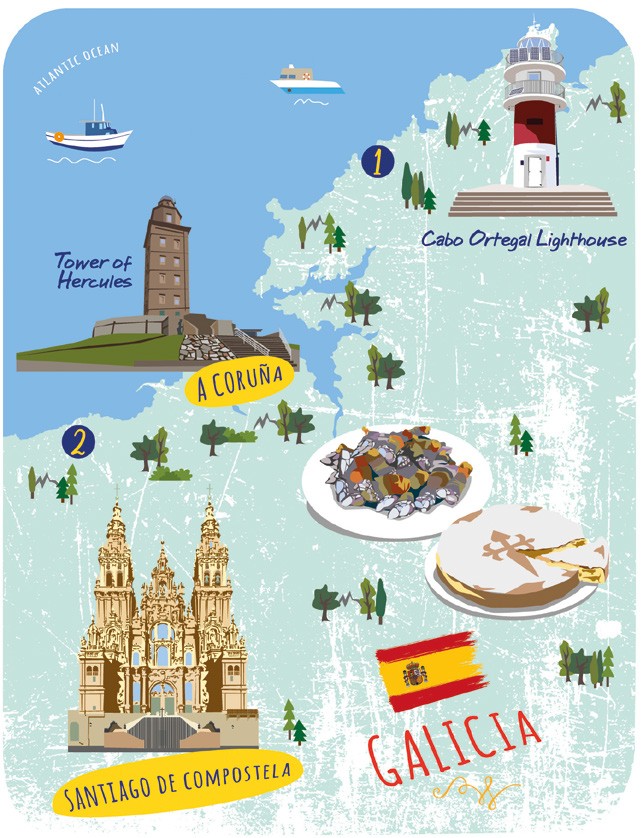Campsites in Spain
Soak up sun in the south, eat Paella in the north and party in the Spanish cities.
View campsites in SpainMarcus Leach discovers a region of north-west Spain famed for the well-trodden routes of the faithful
 Exterior of the church in San Andrés de Teixido
Exterior of the church in San Andrés de Teixido
The year is 813 and a discovery is made in Galicia that will give birth to one of the world’s greatest pilgrimages. A shepherd named Pelayo is reported to have found the remains of Saint James, one of the 12 Apostles, in a field. Ever since endless rivers of worshippers have taken a myriad of trails leading to Santiago de Compostela (the capital of the region) and the cathedral where the apostle is said to be buried.
Our arrival at the town’s main square, the Praza do Obradoiro in the Galician language, in front of the western facade of the strikingly-beautiful church, is not as triumphant or emotional as that of the hundreds of travellers who are arriving at the end of their respective journeys. While we have, for the past few weeks, criss-crossed the well-trodden paths of the network of routes known as the ‘Camino de Santiago’ (or Way of St James), including walking short sections, we have not been through the same experience as those who have traversed hundreds of miles to be here. It’s hard not to feel moved admiring the cathedral as hordes of weary walkers rejoice around us.
Our own trip across northern Spain to this lovely region was not borne out of religion or even spirituality, but rather gastronomy. For, among its verdant and dramatic landscapes, Galicia offers an array of sumptuous produce that is transformed into some of the country’s most delectable dishes.
 Beach near Camping A Lagoa
Beach near Camping A Lagoa
Our first port of call in Galicia was the sleepy coastal city of Valdoviño and Camping A Lagoa, a wonderful rustic campsite set a stone’s throw from a vast windswept beach that we would come to know well through our early morning walks.
Given that much of the food we had heard about was savoury, it came as a pleasant surprise to discover a little bakery a short walk from the campsite selling the most delicious home-made cakes, the pick of which was an orange and pine nut cake.
Unbeknown to us we were staying close to another pilgrimage destination, albeit without the fame of Santiago de Compostela. Nestled in the folds of the coastal hills that lead north from the campsite is the sleepy hamlet of San Andrés de Teixido, home to a church dating back to the 16th century and one of the most important stops on the ‘Camino do Mar’. The drive to get here isn’t the easiest, snaking its way along a cliff-top road, but it is well worth it for the views and a delicacy served up by the cafés behind the church.
If ever there was a food that didn’t fit the saying of ‘you eat with your eyes first’ it has to be percebes (gooseneck barnacles), which are odd-looking to say the least. They are not cheap, with prices as high as €100 for a kilo in the markets, but when we heard how they are gathered from the rocks along remote and often dangerous sections of the coast by the percebeiros – barnacle hunters – we were more than happy to pay the going rate for a plate-full.
There is an old Galician saying, ‘auga a server, percebes botar’, which means, ‘when the water boils, the percebes are ready to serve’, and it’s not long before they are in front of us. Looking more like little dinosaur claws than something you’d want to eat, they are far tastier than they look.
 Pitched up at Camping As Nevedas
Pitched up at Camping As Nevedas
The day ends at Cabo Ortegal, the most northerly tip of this remote stretch of coast, and the point where the Atlantic Ocean meets the Cantabrian Sea. A fierce wind greets us as we step out of the motorhome and head towards the lighthouse that warns ships of the impending danger of the fierce rocks several hundred metres below us. Our arrival couldn’t have been better timed, the sun slowly setting as if being eaten by the hungry ocean before us, great pools of burnt orange spilling across its waters, eventually turning to crimson red.
Our journey south towards Santiago de Compostela would first see us stop in A Coruña, home to the longest urban seaside promenade in Europe, stretching out for eight miles, as well as the Tower of Hercules, the reason for our visit.
The tower is the oldest active Roman lighthouse in the world, dating back to the 1st century, although it was later restored and modified in 1788 by order of King Charles IV of Spain. You can buy a ticket to climb the 242 steps that lead to the top of the lighthouse, from where there are magnificent views of the city and coastline.
We would have liked to have absorbed those views a while longer but Santiago de Compostela was calling. Given the importance and magnificence of the cathedral you would be forgiven for thinking that this was the only attraction in the city. But that couldn’t be further from the truth. It helps to have a little inside information as we did, thanks to the affable Herbie, who runs Camping As Nevedas in A Coruña with his wife Anita, and is a font of knowledge about the region.
It was his tip that led us away from the cathedral and into the heart of the city’s food market, known as the ‘Mercado de Abastos’. The stalls, all set in stone parlours, offer a dazzling range of fish and shellfish, fruit and vegetables, meats and cheeses, local wines and liquors, honey, artisan breads and, of course, the famous Tarta de Santiago.
 Louise Turpin
Louise Turpin
This local speciality, easily distinguishable by its sugar-dusted top featuring the cross of St James, is a simple yet deliciously sweet almond cake that is something of a rite of passage for pilgrims completing their walk.
Thankfully you don’t have to walk to Santiago de Compostela to enjoy a slice, as we did in the mid-morning sunshine, sat watching the world pass us by on the edge of the market.
There is also an excellent variety of cafés and restaurants near the market. The omnipresent dish is pulpo a feira (‘fair-style octopus’), a meal that is simple, yet so flavoursome. It consists of perfectly-cooked tentacles of octopus from Galician waters, which are then thinly sliced and seasoned with flakes of sea salt, smoked paprika and olive oil.
As they say, all good things must come to an end, and so it was that our time in Galicia was drawing to a close. With the fondest of memories from a multitude of experiences and culinary delights, one thing is for certain, we will definitely be coming back. And, who knows, next time we visit it might be at the end of a very long walk.